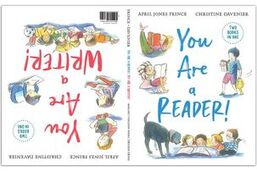 Review by Megan Litwin You Are a Reader!/You Are a Writer! by April Jones Prince and illustrated by Christine Davenier (Margaret Ferguson Books, 2021) is a book for readers and writers everywhere. Its “two-books-in-one” design cleverly shows that readers are writers and writers are readers, and the acts of reading and writing are all around. From recipes to signs, from thank you cards to songs, there are so many ways to be a reader or writer. With a bouncy beat and lively illustrations showcasing all sorts of creative endeavors, there is an infectious joy to this book. And as a former teacher who was deeply engaged in the joyful work of growing young readers and writers, this book spoke to me like an encouraging classroom mantra. You CAN. You WILL. You already ARE… On Writing: Writers of all ages would do well to read Prince’s pages on being a writer. To begin, she notes the importance of looking and listening well, no matter what you’re doing. “You’re a writer everywhere” is a beautiful (and empowering) statement. She devotes a whole page to her signature “juicy words.” And on that pesky topic of writer’s block, she has a few tricks up her sleeve. Yes…whether a beginning or seasoned writer (or reader), there will be stumbles. But this book makes every writer-reader feel like they have the power to fly. Find out more about April at www.apriljonesprince.com/ and browse Christine's beautiful art at www.christinedavenier.com/
0 Comments
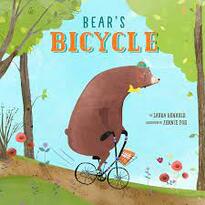 Guest review by Kristi Mahoney In Bear’s Bicycle, written by Laura Renauld and illustrated by Jennie Poh (Beaming Books, 2021) we are reunited with the lovable cast of characters first introduced by this author/illustrator combo in Porcupine’s Pie (Beaming Books, 2018). In this follow-up book, Bear wants to learn to ride his bike for the upcoming Summer Scoot. After multiple trips to the library to find a how-to guide, Bear discovers that doing everything by the book doesn’t always work out. Bear’s Bicycle is an endearing story about practice, perseverance, and the importance of friendship. Add in Jennie Poh’s whimsical illustrations and you have a book that will leave you feeling as warm and fuzzy as bear himself. On Writing:
Laura Renauld’s writing style is delightfully consistent with her original story in this series. It’s filled with things that I personally love in a book and appreciate as a writer: orderly lists, fun-to-say onomatopoeia, distinct voice, and bonus back matter that will delight anyone teetering on whether or not to take on a two-wheeler. And if you happen to fall in love with this woodland cast as fast as I did, you won’t have to wait long to see more of them. Cruise on over and pencil in the release date of the third book in this series, Squirrel’s Sweater (Beaming Books, anticipated September 21st, 2021). To learn more about Laura visit here. 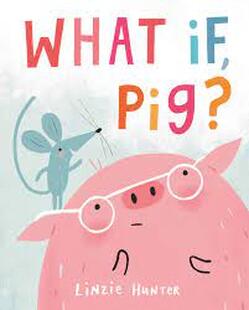 ~ Guest Review by Megan Litwin In What If, Pig? by Linzie Hunter (HarperCollins, 2021), we meet Pig and Mouse, and a supporting cast of colorful, cheerful animal characters. Pig is so kind and fun and generous that one day he decides to throw a party for all his friends. But Pig is also a worrier. A tremendous worrier. He worries that the party is a terrible mistake. A series of “what if” worries follow and spiral out of control. (Sound familiar, anyone?) Fortunately, Pig has good friends…friends who, as it turns out, sometimes worry too. The vibrant, colorful art and dynamic font that mimics Pig’s growing anxiety are perfect complements to the snappy text. What If, Pig? is a thoughtful book about friendship and kindness, worry and wonder. And a timely one too. As the world keeps changing and as perennial back-to-school worries crop up, this book offers a gentle springboard for discussion. On Writing:
Purposeful repetition can be a powerful tool in picture books, and Linzie Hunter does a fabulous job playing with repetition in her text. The use of “what if” as a sentence starter throughout the book, and also in the title, gives this a rhythmic hum, a predictable beat. But not too predictable. Hunter continually surprises the reader by changing the nature of the “what if” and the meaning behind it. “What if” thinking can be worrisome and negative, but it can also be wonderous, hopeful, and full of positive possibility. What if you read a book that warmed your own sometimes-worrisome heart so much that you told everyone about it? What if? You can learn more about Linzie Hunter here. 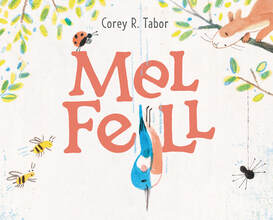 Review by Annie Cronin Romano MEL FELL (Balzer & Bray, 2021) is a delightful picture book about a baby kingfisher who takes a leap—much to the chagrin of her brother and sister—and learns how to fly...by falling. It’s a story about trying new things and trusting the process, and young readers take the leap with Mel as she falls down, down, down, all the while letting her instincts be her guide. Mel’s nature neighbors all try to help, but Mel can sense this is what she needs to do, and her intuition does not steer her wrong. Cheerful, engaging illustrations heighten the upbeat energy of this story. On Writing Tabor incorporates light visual humor and tightly written text (the word count is under 300 words including speech bubbles/asides) to convey a message about trusting your instincts and learning to spread your wings. He avoids the trap of explaining or naming the message of his story. Rather, he allows Mel’s adventure to do the heavy lifting and trusts his young readers to glean their own take-away from the young bird’s experience. This picture book is a strong example of conveying a message in a completely non-didactic manner. A true mentor text for concise, subtle writing. To learn more about Corey R. Tabor, visit his website at www.coreyrtabor.com. 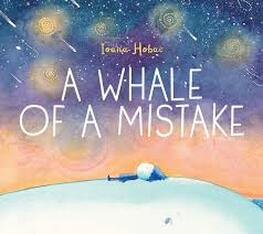 ~ Reviewed by Amanda Smith A WHALE OF A MISTAKE by Ioana Hobai (Page Street Kids, 2020) is a picture book about how anxiety can inflate a mistake to colossal proportions. The story gently conveys how to find perspective and regain control. The protagonist makes a mistake which grows into a whale that swallows the protagonist and takes it out to sea. Along this wild ride, the protagonist feels trapped, powerless, and scared, but through observation and self-reflection, learns and grows, and eventually becomes brave enough to move on. Hobai cleverly uses the whale, something concrete that young children can comprehend, as a metaphor for abstract, hard to pin-point emotions of guilt, anxiety and self-doubt. The watercolor illustrations bring the whale metaphor to life, and enhances the emotions through tumultuous swirls and stormy washes. The color story moves from dark bruise-like colors in the beginning towards light, bright and cheerful colors towards the end, reinforcing the emotional journey. A WHALE OF A MISTAKE is written in simple language, making it easily accessible to young readers, yet the content is universal which makes this a great conversation starter for readers of any age regarding regret and self-reflection. ON WRITING: A WHALE OF A MISTAKE deals with universal emotions and themes. By writing the book in the second person, removing the need for gender specific pronouns, and addressing the reader directly, Hobai makes this a book with which all readers can identify. 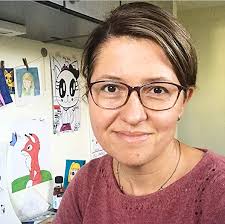 To purchase A WHALE OF A MISTAKE visit Indiebound , The Silver Unicorn Bookstore, or your local independent bookstore. Learn more about Ioana Hobai and her books at http://www.ioanahobai.com/ 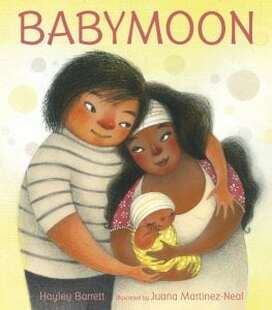 Review by Annie Cronin Romano After couples marry, most go on a honeymoon to enjoy time together--just the two of them--before returning to the business of everday life. But what about when a baby is born? The arrival of a new little one is often paired with pressure to share every moment, be it through social media or a constant flow of visits from relatives and friends. Amidst the excitement, the importance of having new family time is often lost. This need to take time to bond as a family is the focus of Hayley Barrett's debut picture book, BABYMOON (Candlewick, 2019). A couple and their newborn are depicted, cherishing each moment and learning from first experiences, joys, doubts, and amazements. In BABYMOON, Barrett's lyrical text is warm and reassuring. The value of taking a "babymoon" to spend quality time together with your little bundle is lovingly highlighted with a sweet, lulling rhythm. Juana Martinez-Neal's illustrations, using smooth, curved lines and a neutral pallet of yellows and browns, are as soft and cozy as a baby's blanket. Visually soothing and with text that hums like a sweet lullaby, BABYMOON is one picture book every new family should hold close to the heart. (Fiction picture book for ages 2-5) On Writing Hayley Barrett’s debut is a strong example of sparse, lyrical text with stunning impact and beauty. For more information on Hayley Barrett’s work, visit https://hayleybarrett.com/about-hayley/. To learn more about Juana Martinez-Neal's work, visit her website at http://juanamartinezneal.com/. 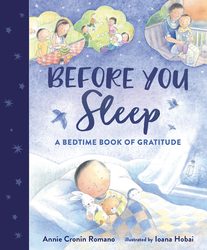 Review by Francine Puckly This book pick begins with a disclaimer—all of us at 24 Carrot Writing have been intimately involved with Annie Cronin Romano’s debut picture book, Before You Sleep: A Bedtime Book of Gratitude (Page Street Kids, 2018). This included reading and critiquing numerous drafts as Annie journeyed with this story from rhyme to free-verse and back again. Despite that by the very nature of our involvement we are biased toward this story, this picture book is an enchanting, rhythmic and comforting story about tucking in one’s senses before dropping into the night’s slumber. Annie gently takes the readers and young listeners of the story through the sounds, scents, tastes, sights, and touches experienced during the day. Ioana Hobai’s soft and luscious illustrations add to the calming effect. Before You Sleep is a perfect way for helping little ones mentally wrap up their day and establishing a bedtime mindset. This book will delight young readers and parents alike! On Writing:
Annie’s voice is lyrical, and she evokes emotion and response with her careful word choice. She shows in this manuscript how important it is to make every word count. In addition to thoughtful, tight text, Annie uses unexpected experiences to highlight these senses, bringing a new experience to her readers. 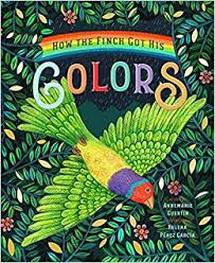 Review by Annie Cronin Romano I haven’t come across too many newly-published folktales these days, but HOW THE FINCH GOT HIS COLORS (Familius, 2018) is one that hit the shelves earlier this year and is among the bright spots of recent picture book releases. Using a traditional folktale style, author Annemarie Riley Guertin depicts how the world and its creatures transformed from a monotone appearance to a brilliant expanse of color. Guertin mixes magical storytelling with just a touch of a moral in this narrative inspired by a Belgian folktale. The folk-art illustrations, beautifully done by Helena Pérez García, start off the book in muted tones of gray, black, and brown and transform into a brilliant kaleidoscopic palette. Parents and teachers will love this book for working double duty as both an engaging story and a reinforcer of color concepts. HOW THE FINCH GOT HIS COLORS, a fiction picture book for children ages 4-8 years old, is an ideal addition to bookshelves both in the home and the early elementary classroom. On Writing Annemarie Riley Guertin’s story is a solid mentor text for those writers interested in the folktale style. The language is engaging, rich, and vivid yet accessible to younger readers and listeners. To learn more information about Annemarie Guertin’s work, visit her website at www.annemarierileyguertin.com. For info on Helena Pérez García's work, visit her website at www.helenaperezgarcia.co.uk/. 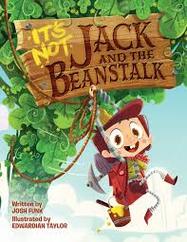 Review by Annie Cronin Romano If your children enjoy adventure and a hearty laugh, then get your hands on IT’S NOT JACK AND THE BEANSTALK (Two Lions, 2017) for a new twist on the classic fairy tale. In this latest picture book by Josh Funk, Jack questions the narrator at every turn, challenging the storyline and often going off-script. In the process, the narrator’s attempt to tell the traditional version of the story is turned upside down by the feisty and strong-willed boy. These twists, and the sassy interactions that ensue, create a funny, high-energy story that children will want to hear (or read) again and again. Edwardian Taylor’s bright, lively illustrations paired with fun cartoon speech bubbles capture the spunk of the story and add humor beyond the text. The perfect read-aloud, IT'S NOT JACK AND THE BEANSTALK will engage young readers with vibrant images and clever storytelling. IT’S NOT JACK AND THE BEANSTALK is picture book for children ages 4-8. Pick up this witty story for guaranteed giggles! On Writing IT’S NOT JACK AND THE BEANSTALK is a strong mentor text for fractured fairy tales and meta-fiction (breaking the fourth wall). Funk blends the traditional story with modern attitude and language to create an amusing clash between the narrator and the main character. For more information on Josh Funk’s work, visit his website at www.joshfunkbooks.com. For info on Edwardian Taylor’s work, visit his website at www.edwardiantaylor.com. 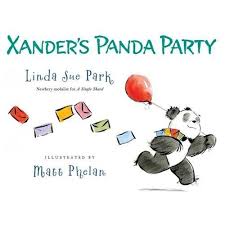 Review by Amanda Smith Often, in order to help preschoolers make sense of their world, adults organize things into perfectly logical groups. As children grow and learn, they discover the lines between these groups are blurred, and sometimes well-defined groups become barriers. Xander Panda learns a similar lesson when he wants to throw a bear affair, but discovers his friend, Koala, is not a bear. XANDER'S PANDA PARTY (Clarion Books; 2013) is a fun rhyming picture book about inclusivity and what happens when we expand our borders. Written by Newbery medalist Linda Sue Park and illustrated by Matt Phelan, XANDER'S PANDA PARTY is an attention grabbing read-aloud pleasure. The text dances off the tongue with a happy rhythm and playful rhyme. Flawless, whimsical internal and end rhyme make this book titillating to read, and provide enough silly-factor to satisfy young readers (and listeners). The humorous, ink and watercolor illustrations further enhance the read. Each animal is illustrated with considered character: Show-off black bear, shy grizzly, an adorable polar bear pair, a cuddly baby penguin, a tower of turtles that will melt your heart, and of course, Xander himself with bucket loads of personality. Young readers will take pleasure at each page turn when they are introduced to new animals, and Xander’s growing party conundrum. Xander’s Panda Party is a perfect choice for story time and is definitely one of those books adults won’t mind to read again, and again, and one more time please. On Writing:
Linda Sue Park’s rhyme is exquisite! XANDER'S PANDA PARTY is a great example of rhyme that flows naturally and is in no way forced to tell the story. The story is paramount, and because the text is not set like a traditional rhyming text with lines and stanzas, sentences flow easily. The lyrical elements surprise a reader at first read and continues to delight throughout the reading experience. As a mentor text the biggest take away here is the fabulous internal rhyme that is in no way predictable, but smart and subtle. |
Our favorite mentor texts to guide your writing and revisions.
Categories
All
Archives
April 2024
|
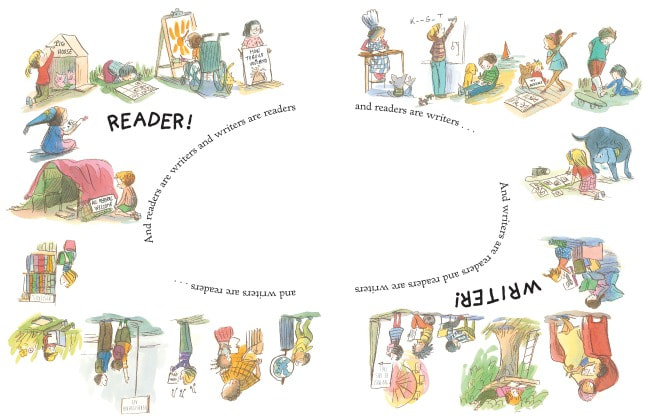
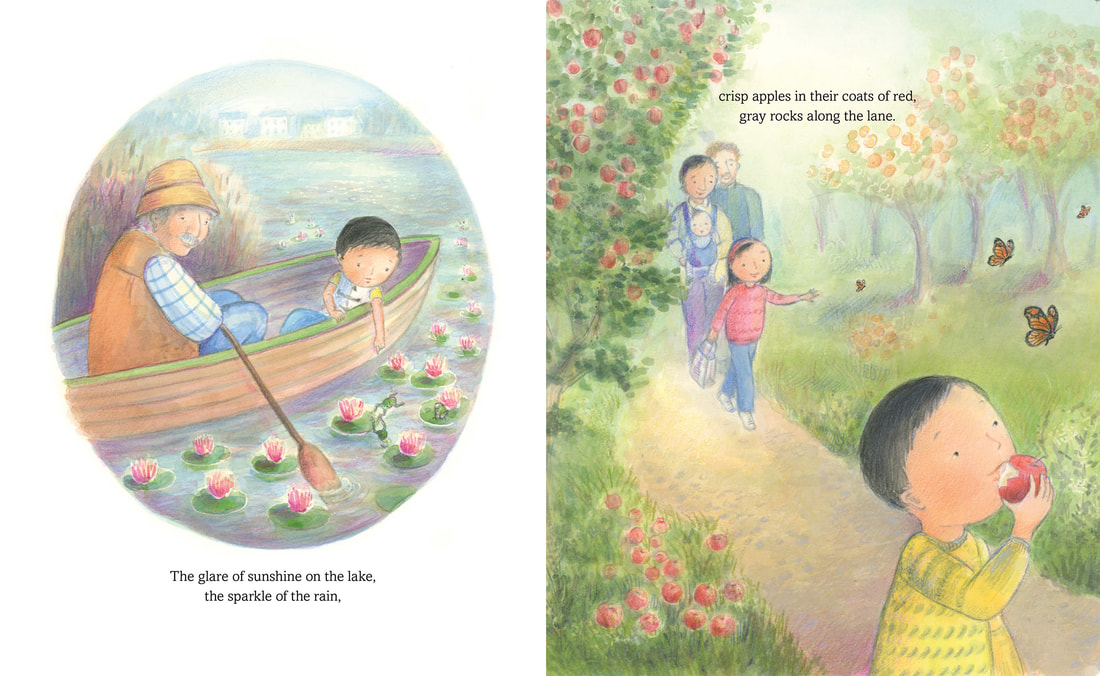
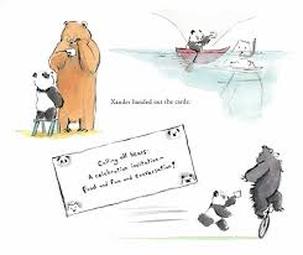
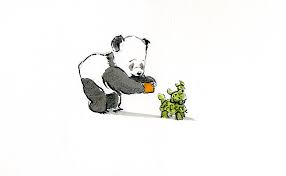
 RSS Feed
RSS Feed